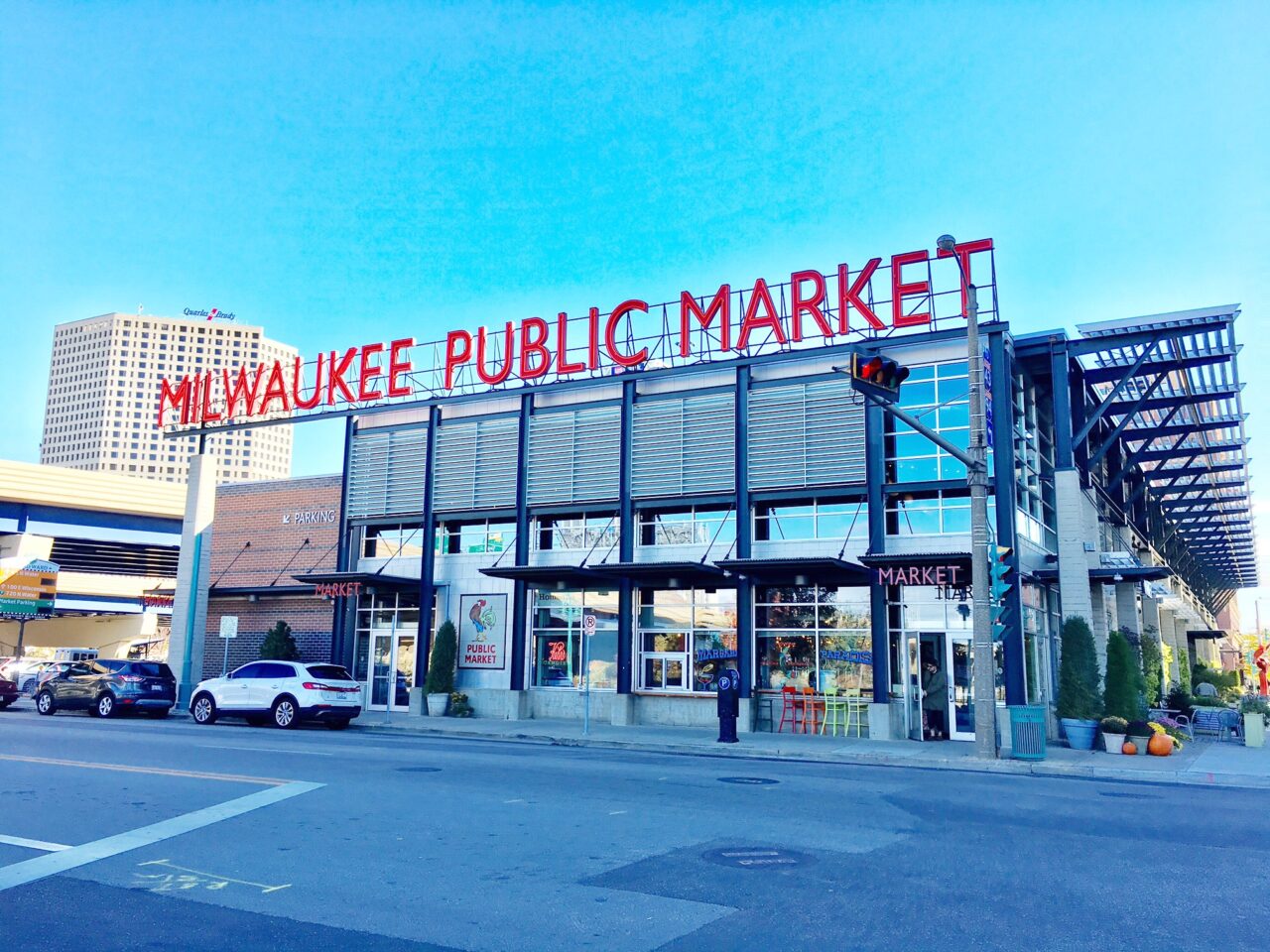The Milwaukee Public Market has been largely desolate since the onset of COVID-19 forced bars, restaurants and venues to limit operations or close doors. But that changed last week as vendors started to restock their shelves and fire up their grills for what’s considered phase one of the market’s reopening.
“There’s life that’s injected into this building right now and there’s nothing like it,” said market executive director Paul Schwartz in an interview with BizTimes Milwaukee.
He and his team have been back at work, clad in face masks, overseeing the launch of the market’s curbside pick-up and delivery operation. As of Friday, 12 of the market’s 17 local food and retail vendors have reopened and are adapting to change.
Foltz Family Market, which sells groceries like butchered meat, fresh produce, frozen food and made-to-order wood fired pizza, has been open for a couple of weeks already. In addition to curbside, the business has rolled out local delivery free of charge.
With 3,500 condo or apartment units in the Third Ward and no supermarket in the neighborhood, the service has been a huge hit, said Schwartz, who anticipates Foltz will continue delivering groceries even as customers are allowed back inside the market.
He said other vendors such as On the Bus, which previously didn’t offer delivery, or those that used third parties like Eat Street and Uber Eats, are now considering plans for their own delivery service.
“I’m literally looking at vendors adapting and coming up with new ways in which to engage their audience and deliver their product to customers, which in some ways is probably something we should have been doing already,” said Schwartz. “This just ignited their need to do it.”
For Thief Wine Shop & Bar, its public market store is now its sole location. The business announced last week via Facebook that its Shorewood location is closing after 10 years.
“Our Shorewood lease is up at the end of June, however, and with the price increase and commitment that a renewal would have triggered it was financially prohibitive for us to stay.”
It noted that its public market shop and wine bar remains open, currently for curbside pick-up.
“Thief Wine is still going strong there and we plan on being there for years to come,” the business wrote.
The market is also focused on driving customers back to the building once ‘Safer at Home’ restrictions lift and diners feel safe to dine out again.
One way of doing that is maximizing outdoor seating space, which was recently expanded along St. Paul Avenue and across North Water Street. During summer when the weather is nice, its outdoor seating is usually at capacity, more so than inside, said Schwartz.
“Even if takeout orders can happen, we could still provide a space for people to enjoy their meal if that’s what they’re getting here,” he said.
Schwartz said ramping up to full operations will be a gradual process under state and local guidance. The next phase will allow customers to enter the building for carryout only, followed by the reopening of indoor seating areas on the second floor and throughout the main floor– all depending on limits to capacity.
Having ample space, both inside and outside, is an advantage that public markets and food halls across the country are benefitting from, Schwartz said, especially as full-service restaurants and retailers are faced with the challenge of creating distance often out of very little space to reopen with limited cash flow.
Vendors also have the advantage of being under the same roof as businesses going through the same challenges, while having access to the market’s resources such as a collective social media platform and established loading zones for curbside service.
They also have experience navigating other challenges such as freeway reconstruction, which took away the market’s parking lot for two years, and the streetcar development, which blocked street traffic for 18 months.
“There’s been modifications and adaptations that all of them have had to endure and overcome,” said Schwartz.

St. Paul Fish Market has one of the larger tenant spaces at the market, with a 50-person total seating capacity. Its sidewalk palapa bar reopened a week ago as a carryout site for a limited menu, and has so far drawn a crowd with its $12.95 lobster dinner, said owner Tim Collins.
The restaurant’s Mequon location also reopened a week ago for carryout and fresh fish.
Its Milwaukee Public Market location has been busier than its Mequon locatioin because the neighborhood is more populated. Collins said his business has it easier than other vendors right now thanks to the extra space outside, even though the weather has been chilly.
But it won’t be enough space when it’s time to open seating areas with distance requirements.
“If that time ever comes,” he said.
St. Paul’s sales have been cut in half due to the COVID-19 shutdown and keeping the business afloat has been a challenge, but Collins and his wife and co-owner Mary Beth Collins have seen dark times before. They lost their business and house in the wake of 9/11, so this feels like round two, he said. The couple started St. Paul Fish Company in 2005.
“We’re a really healthy business, so if we don’t make it no body’s going to make it,” said Collins.
In 2019, a record 2 million people visited the Milwaukee Public Market, which was a 13% increase from the previous year.
Schwartz said the recent shutdown will, of course, have an impact on this year’s numbers, but considering the Public Market’s place as a regional attraction and local staple powered by entrepreneurial vendors, “we could be surprised,” he said.
Get more news and insight in the April 27 issue of BizTimes Milwaukee. Subscribe to get updates in your inbox here.



 St. Paul Fish Company's 'Crabside Pickup' at its palapa hut space outside the Milwaukee Public Market.[/caption]
St. Paul Fish Company's 'Crabside Pickup' at its palapa hut space outside the Milwaukee Public Market.[/caption]